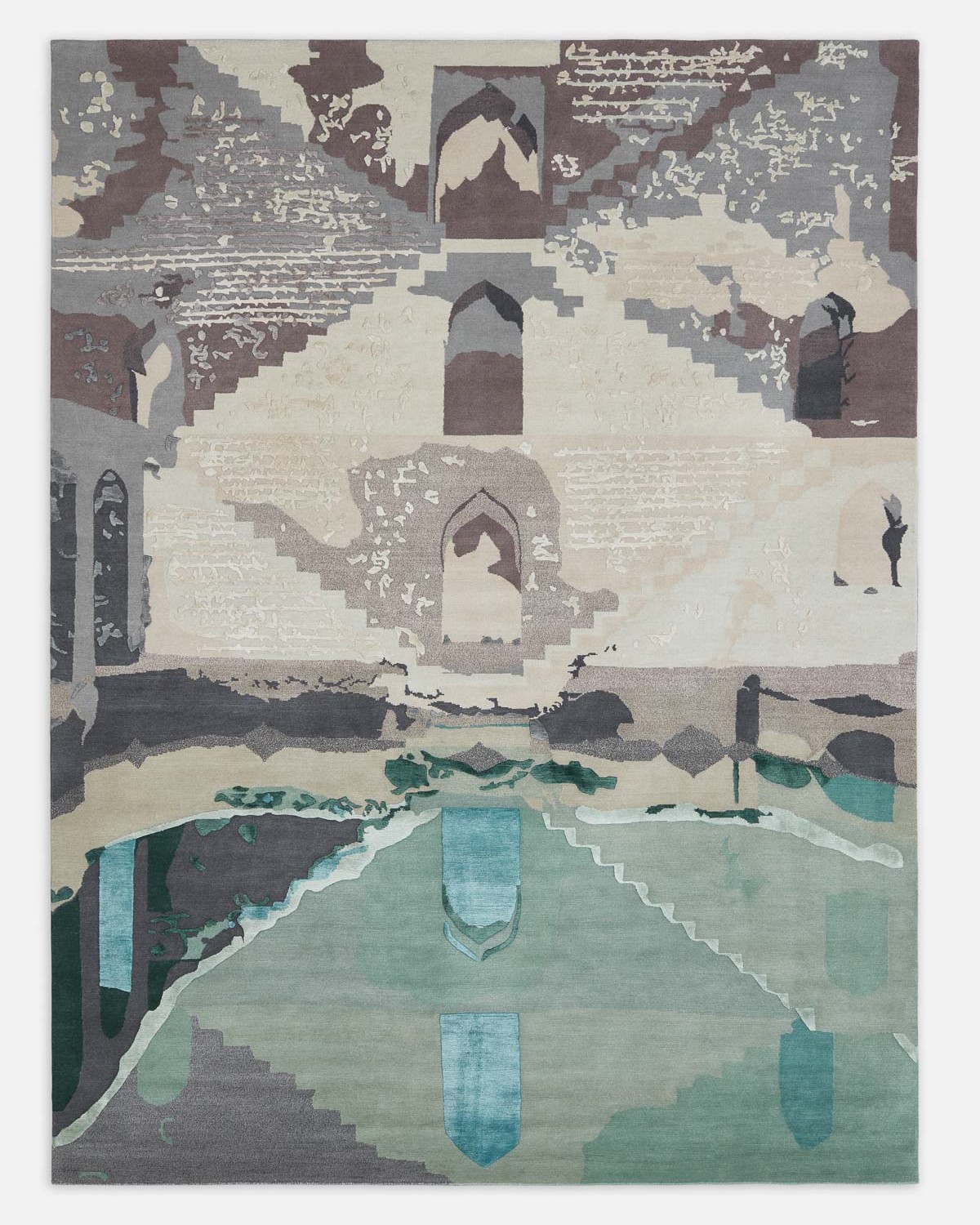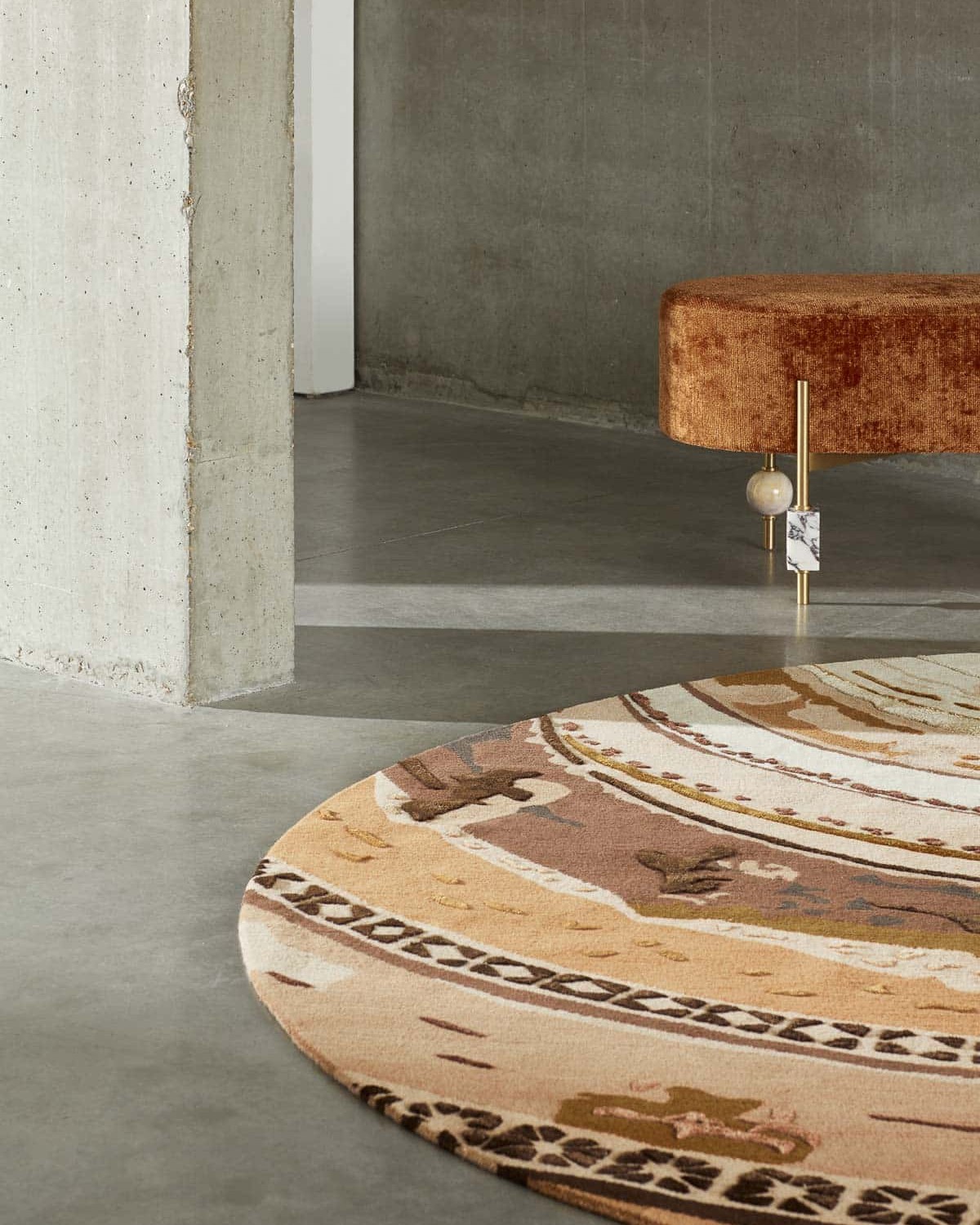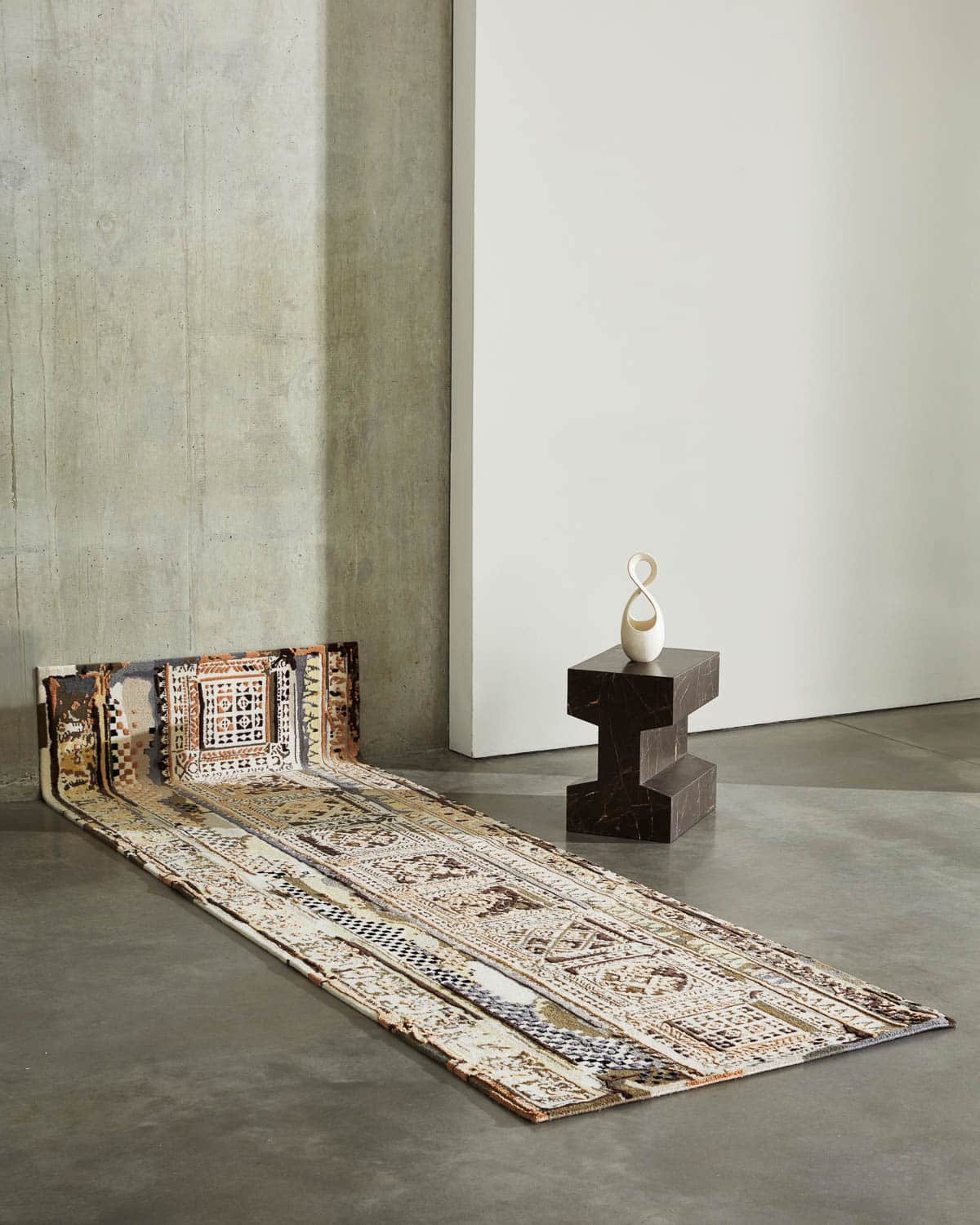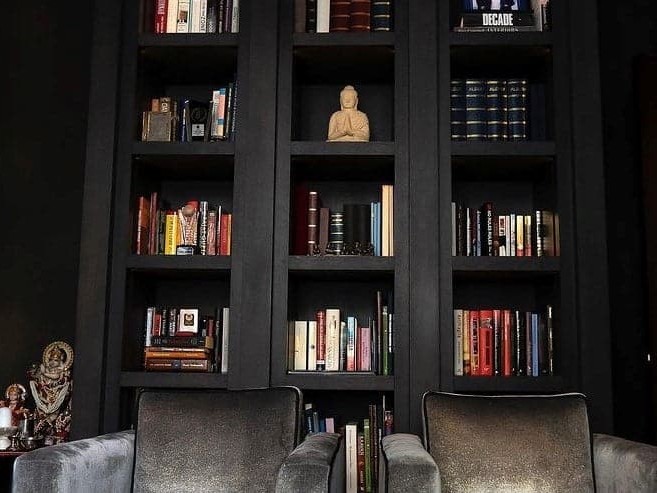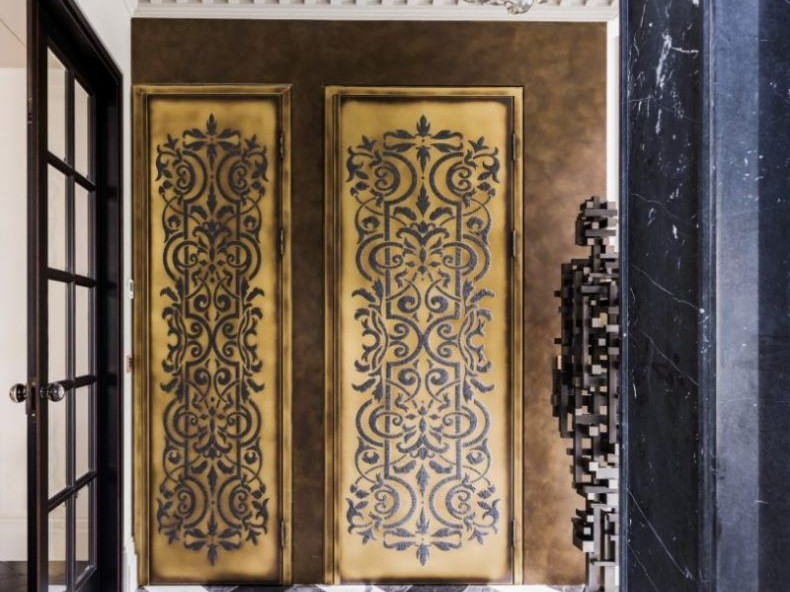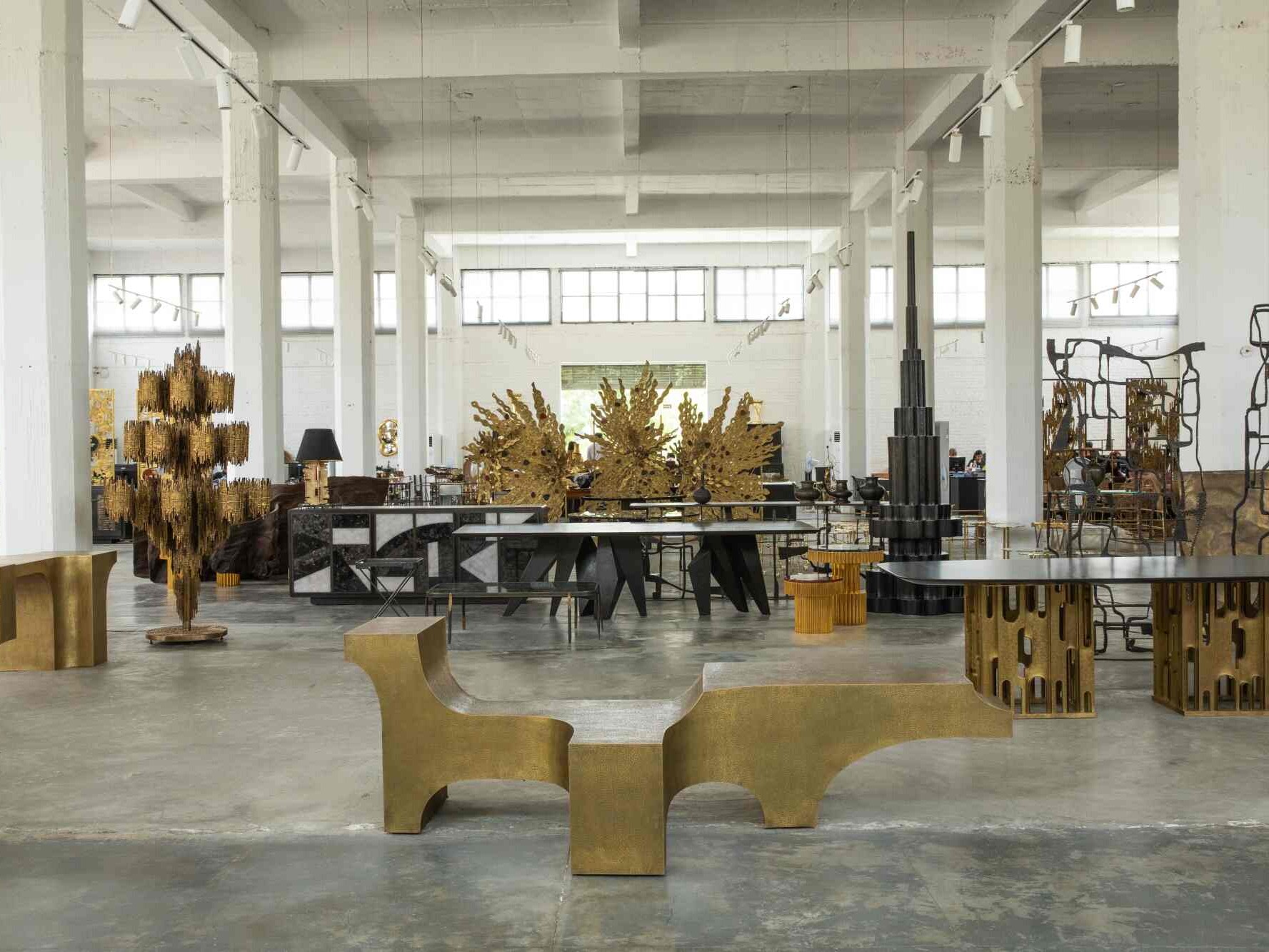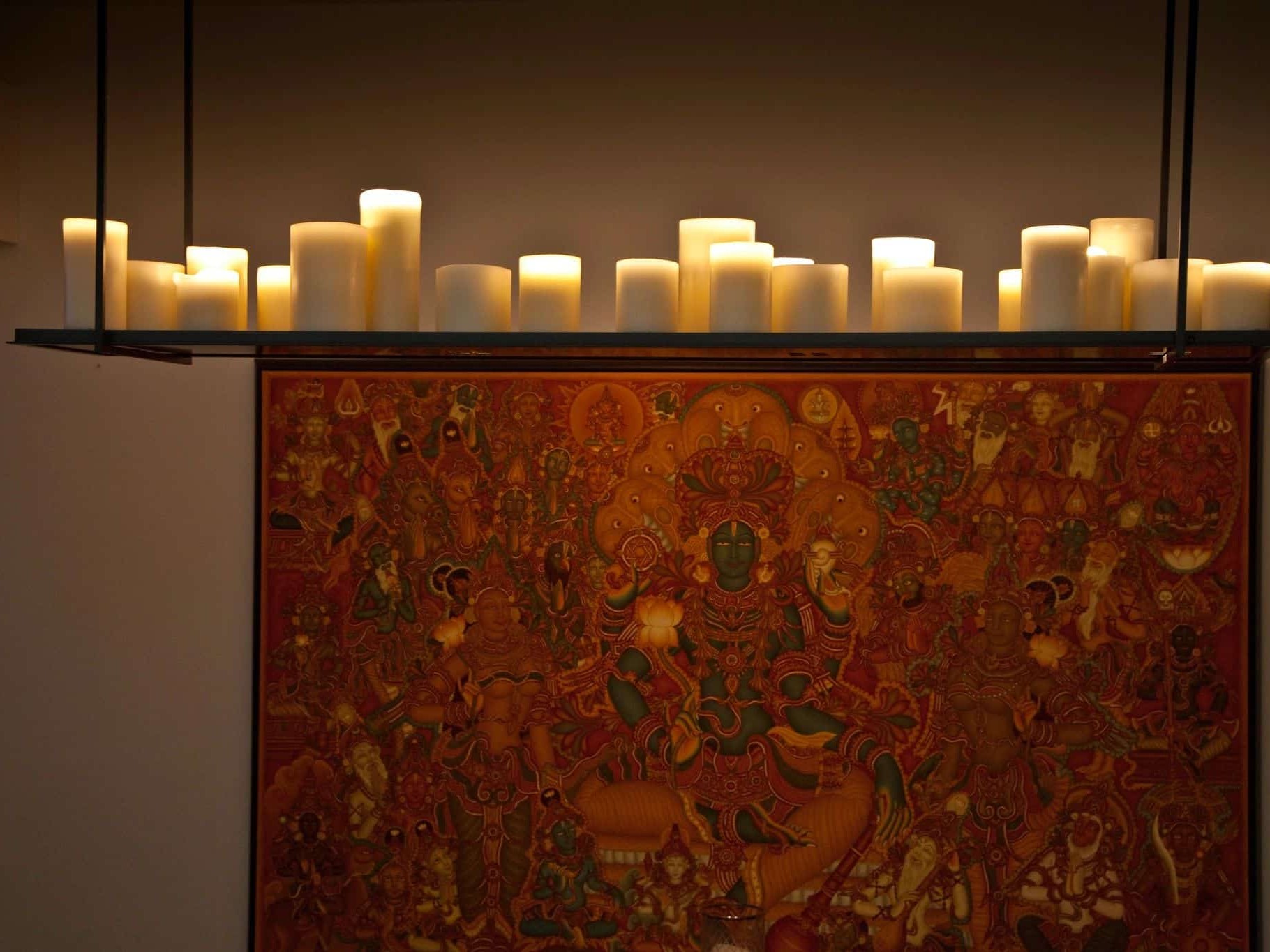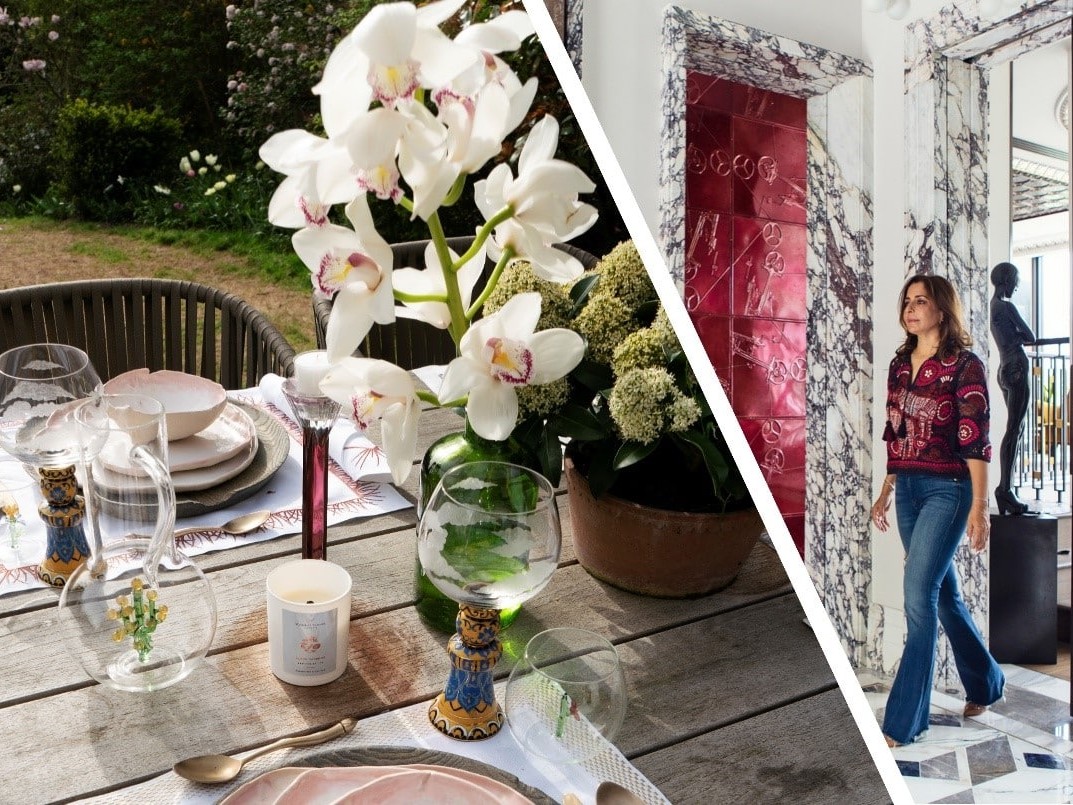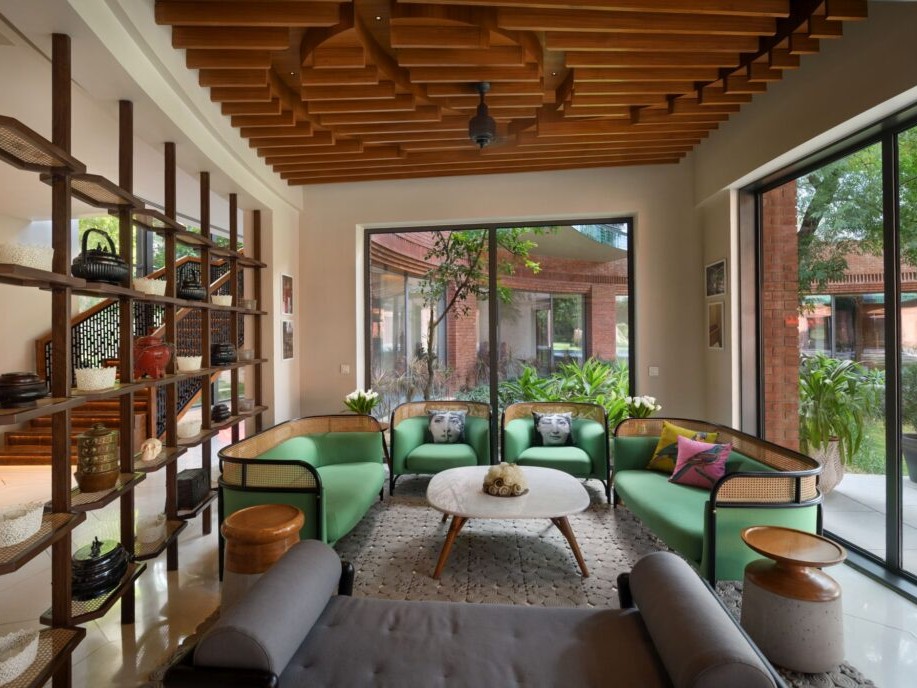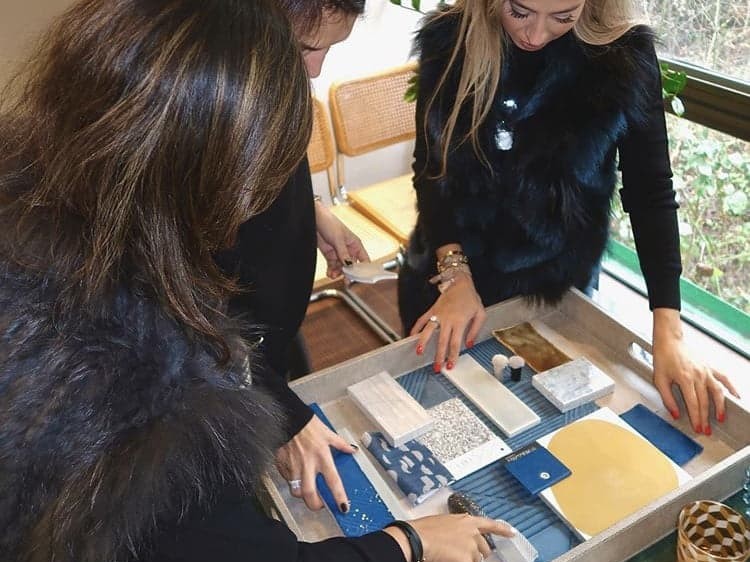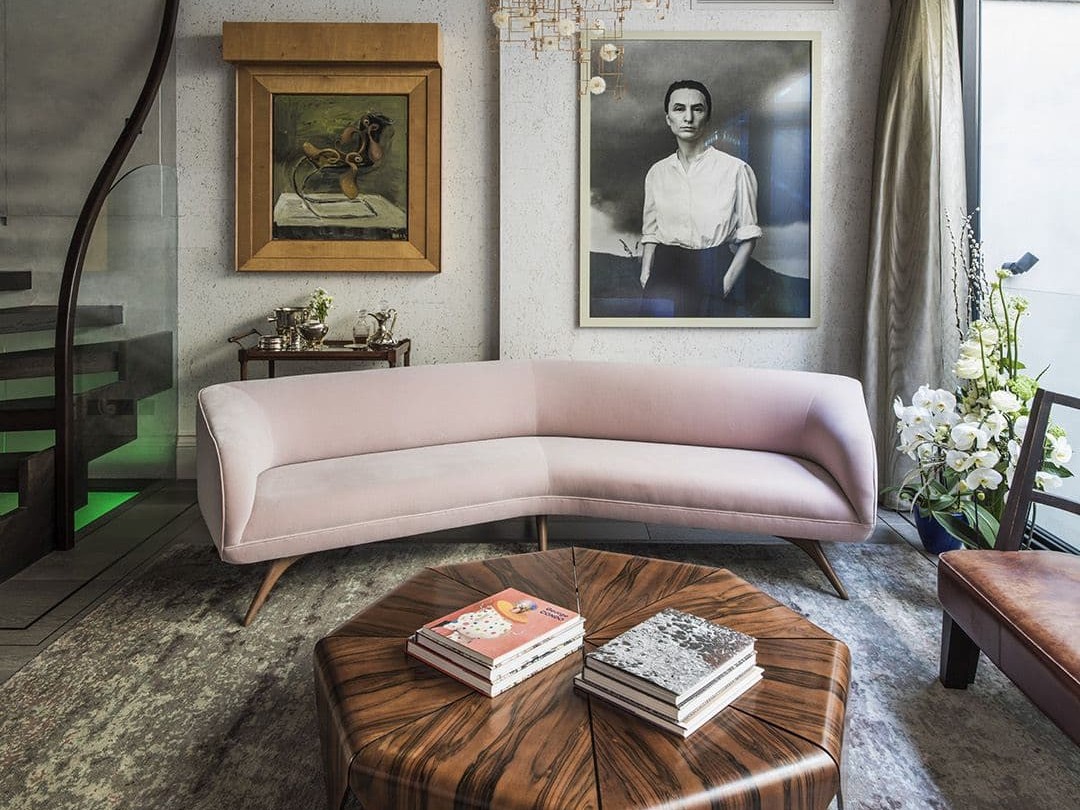To mark the launch of our exclusive rug collection by Shalini Misra, produced by cc-tapis, we organised a little fireside chat with Shalini and cc-tapis’ founder, Fabrizio Cantoni. Together they dive into the cultural significance of stepwells, the creative process, and the intricate production methods that give each piece its unique soulful character.
Shalini, what drew you to the stepwells of India as a source of inspiration?
The stepwells of India, known as ‘Vav’ or ‘Baoli,’ are an integral part of the country’s cultural and architectural history. Their historical significance, acting as water-harvesting systems and spiritual centres, deeply inspired me. They also served as safe havens, particularly for women fetching water, reflecting a rich cultural tapestry that I wanted to honour in the collection.
Shalini, why did you choose cc-tapis to produce the limited-edition rugs?
cc-tapis stood out for its commitment to craftsmanship and eco-friendly practices. With a deep respect for natural materials and an emphasis on handmade techniques, they aligned perfectly with the vision for this collection. Their dedication to social and environmental responsibility, as seen through initiatives like cc-for education, really resonate with Curio’s values.
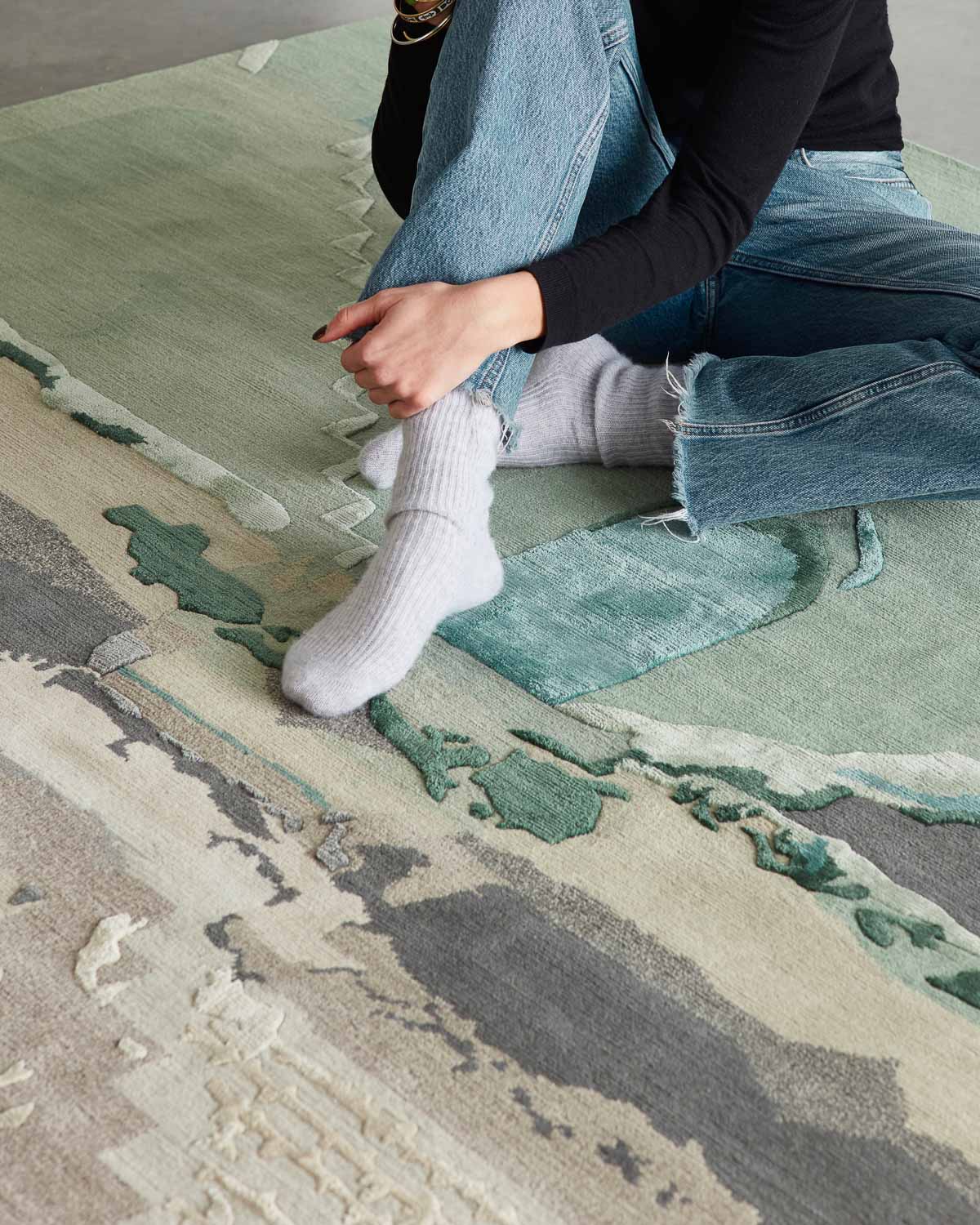
Fabrizio, could you describe the step-by-step production process and any special techniques used?
The handknotting technique is at the core of our production process, a method common in the Middle East, India, and China. From refining raw materials to dying processes, every stage is managed in-house. Our artisans pour everything into each rug. Pieces can include up to 232,000 individual knots per square meter. The finishing processes, including hand-cutting and embossing, contribute to the exceptional quality.
How long does each piece take to make, and how many artisans are needed to create one?
The production time varies, but on average, each piece takes 14 to 17 weeks to complete. A team of skilled artisans work closely together to ensure the rugs meet our exceptional and responsible standards.
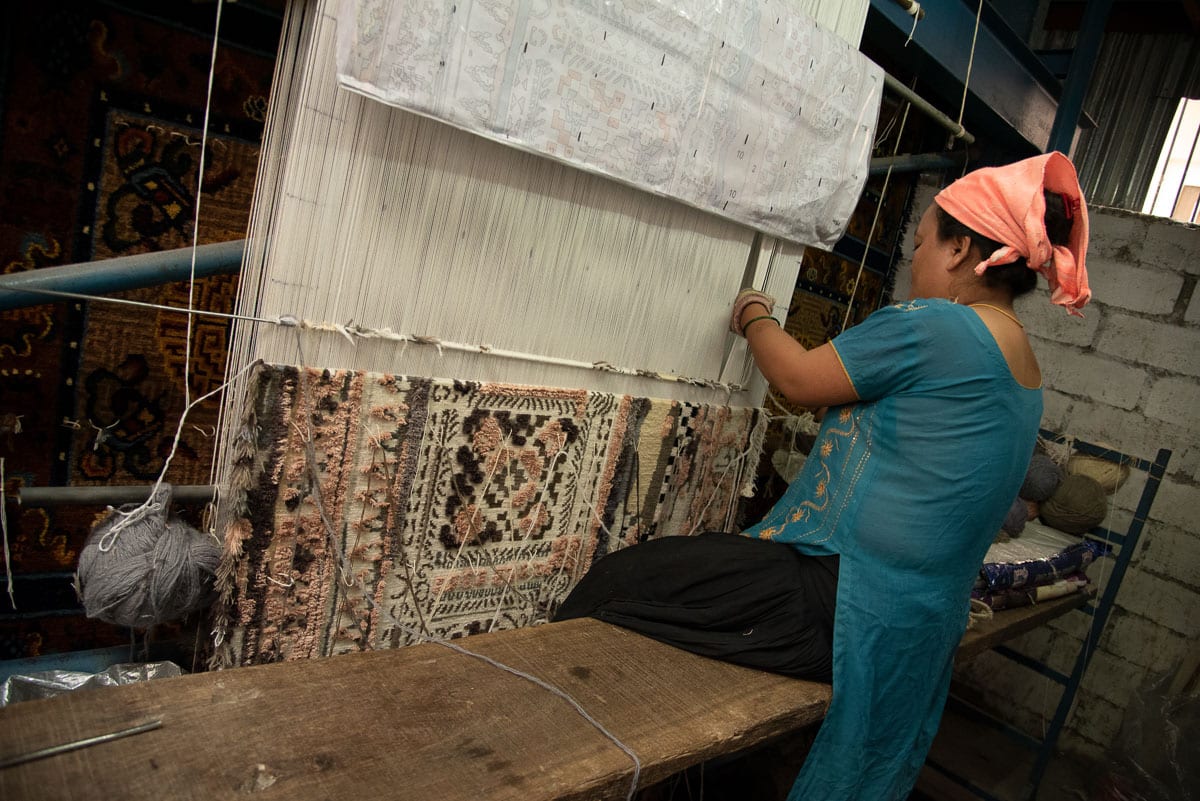
How were the stepwells translated onto the materials?
The images of Indian stepwells are translated onto the rugs through delicate gradients of hand-dyed Himalayan wool. Our Nepalese artisans integrate different pile heights, textures, and an original combination of colours to define the varying levels of stepwells and elaborate carvings.
Sustainability has become an overused term across interiors and fashion industries. How is cc-tapis practicing responsible design?
cc-tapis prioritises sustainability through the use of ethically sourced materials and eco-friendly production practices. Our commitment goes beyond words – from using plastic-free packaging to achieving carbon neutrality. And, through our non-profit organisation cc-for education, we’re not just designing rugs; we’re creating a positive impact. It’s our way of weaving responsible design into every thread of our work.
Shalini, what does this collection mean to Curio?
Shalini: This collection holds profound meaning for Curio as it celebrates the talent of Nepalese artisans and the collaborative spirit within our tight-knit team. It is a testament to our commitment to spotlighting under-represented artists globally and bringing unique, meaningful pieces to the market.
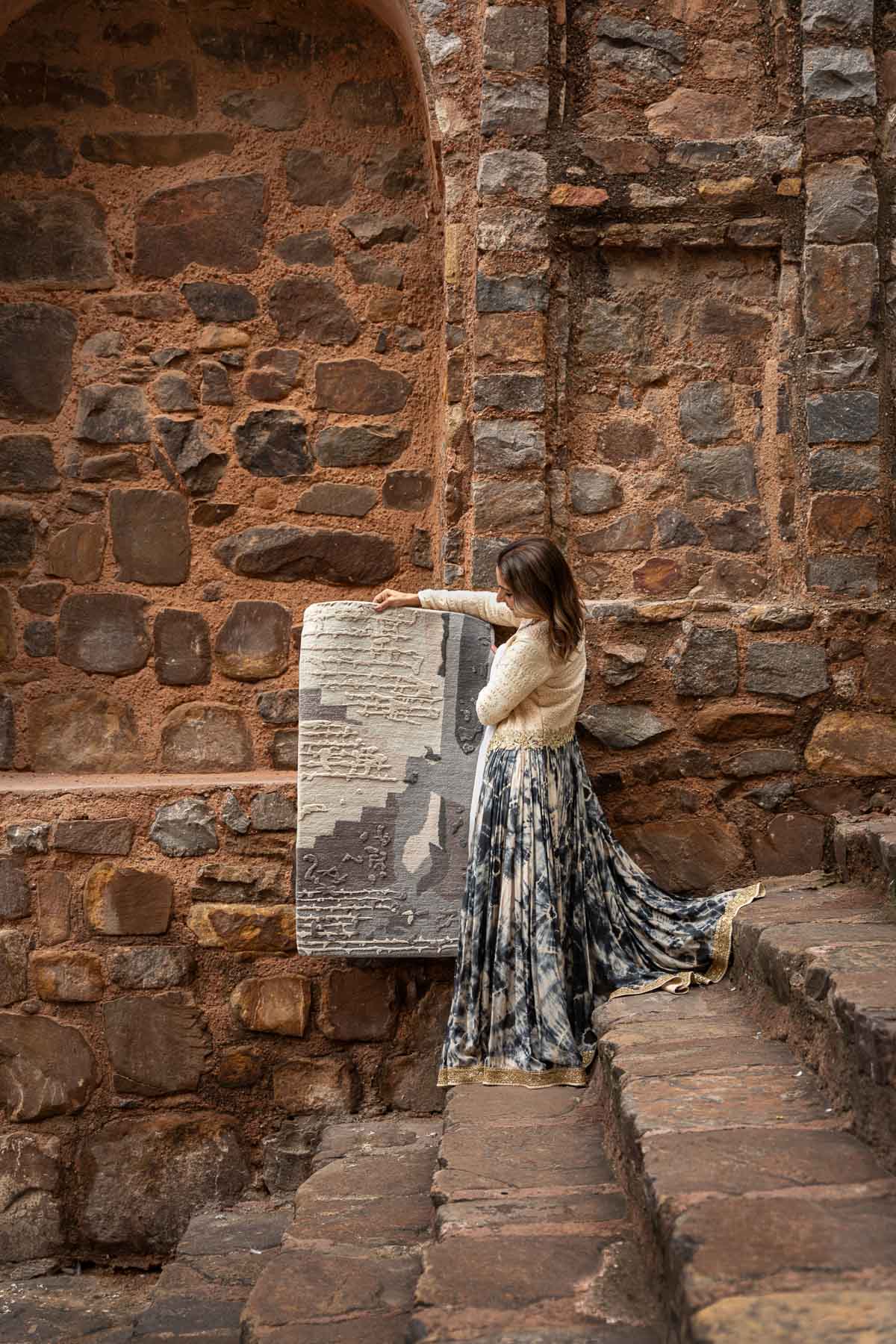
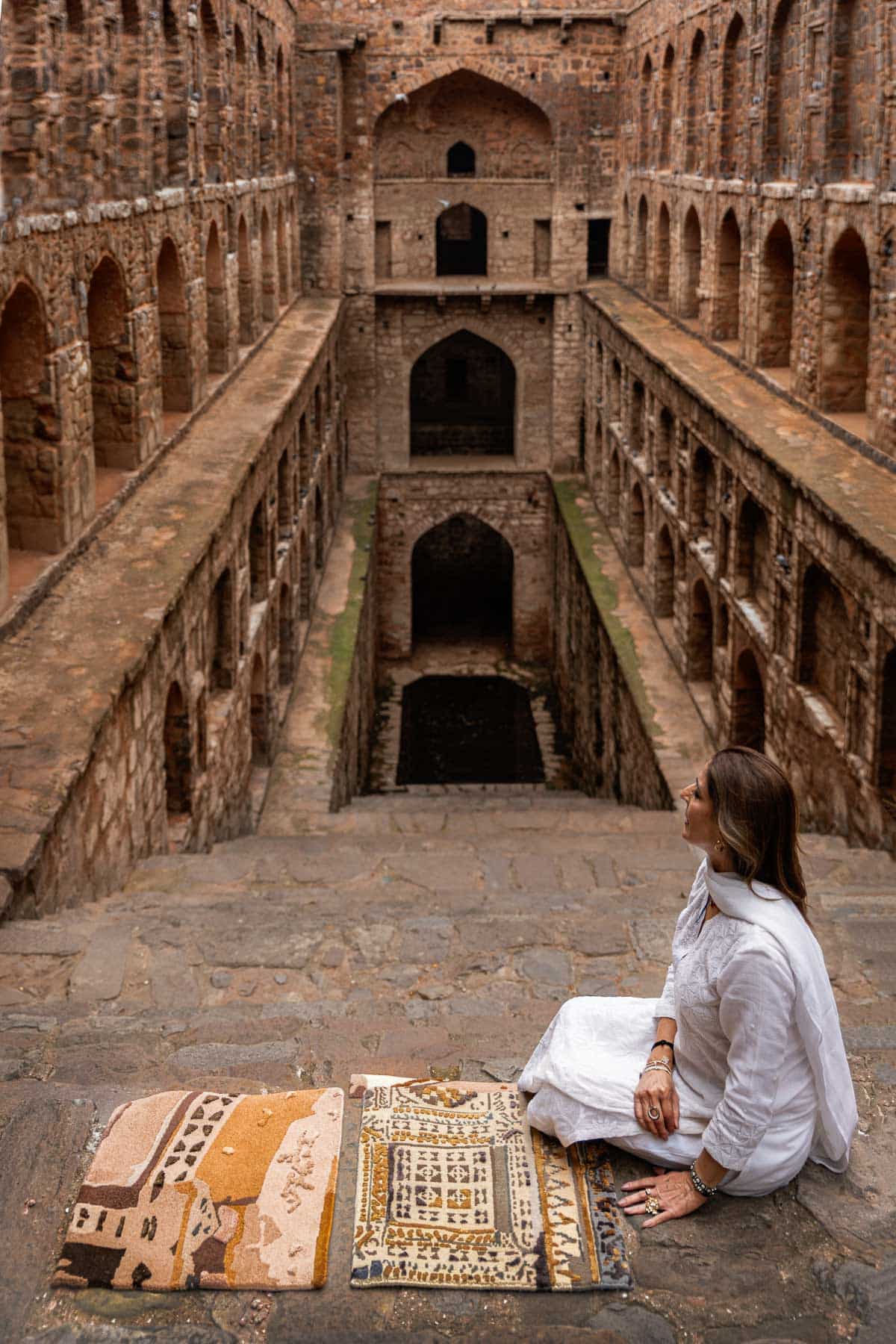
Do either of you have a favorite piece from the collection?
Shalini: Each rug is special, but if I had to choose, I’m particularly fond of Ujala for its embodiment of the stepwell’s arch-shaped niches. I’m also drawn to the contrasting blue and grey tones.
Fabrizio:
“I love all of them. I can’t just mention one, as each rug has its own distinct personality. We have developed the collection working closely with Shalini, pushing our production processes to be sure that the images of Indian stepwells were tangible in each design. I couldn’t be happier with the final result.”
To read more about the rugs, read our article here [link to article]
Related articles
Flooring Ideas: Eight Stylish Ways To Bring Your Floors To Life
If you’re looking to bring your floors to life, there are many creative ways to do so.
Introducing The Shakti Design Residency
We’re so thrilled to launch the Shakti Design Residency in India, a new annual initiative to support emerging international design talent.
Interior Design Trends For Spring 2023
Expect plush velvets, dusty pastels and a focus on minimalism in our roundup.
Home Interior Design And How To Visualise A Space
From mood to layout, we share the essential aspects to consider when designing a home.
The Art of Curating A Personal Collection At Home
Five ways your art can transform your home with soul, ambience and character.


